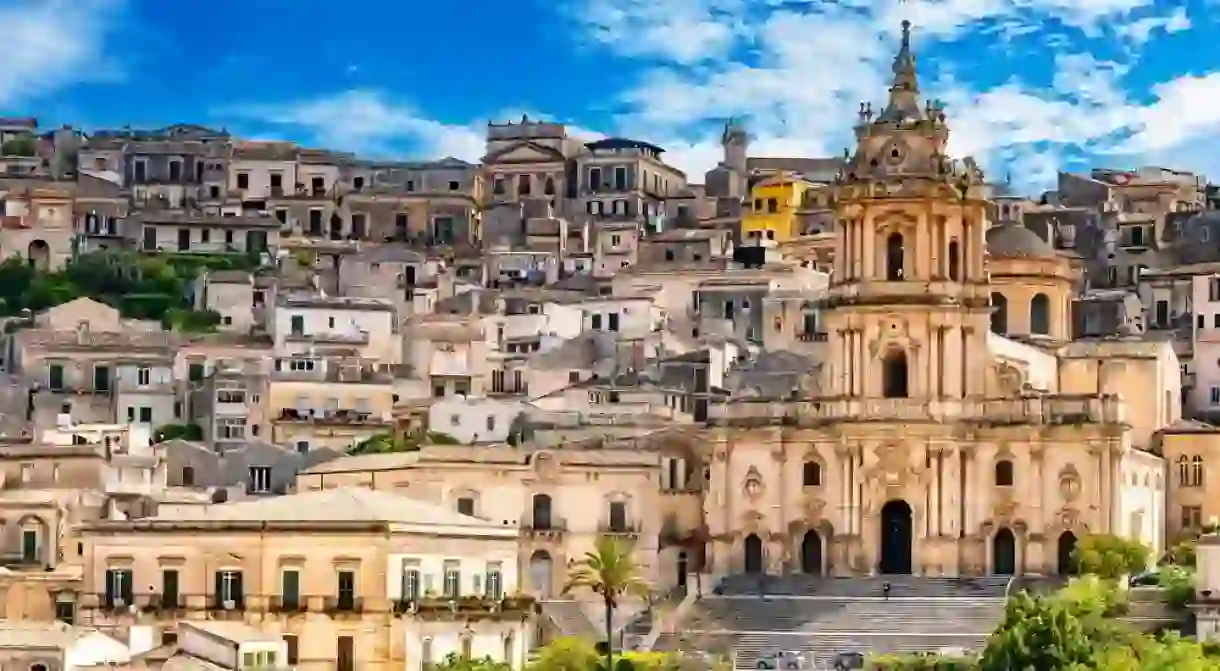What to See and Do in Modica, Sicily

Explore the winding streets of this Unesco World Heritage site in the Val di Noto region of southeast Sicily. Modica, Italy is home to Baroque architecture, Salvatore Quasimodo’s birthplace and, of course, the Modica Chocolate Museum.
Modica is formed of two halves, Alta and Bassa, which cling to a steep-sided gorge. A labyrinth of steps and alleys connects the two. As elsewhere in this part of Sicily, extensive damage caused by the 1693 earthquake paved the way for change and the construction of many Baroque churches and palaces. But the town has plenty more to entice travellers – here are the best things to do in Modica.
Peek inside the Duomo di San Giorgio
Cathedral, Church

Indulge yourself at the Chocolate Museum
Museum

Visit the Casa Natale Salvatore Quasimodo
Museum
Salvatore Quasimodo was a Modica-born poet who won the 1959 Nobel Prize in Literature. Today, the house in which he was born is a museum. Although the family soon moved on, tour guides will lead you through the poet’s first home, enthusiastically sharing anecdotes about his brief time here. The bedroom is furnished as it would have looked when Quasimodo was a baby, and another room is a recreation of the Milan studio in which he wrote.
Admire the Castello dei Conti
Historical Landmark
The ruins of Castello dei Conti are perched on a rocky outcrop overlooking Modica. The view is especially lovely at sunset. Built in the 13th century, it once housed the local governor and was also a prison for a time. This fortified citadel fell victim to the earthquake in 1693, which shook the ground so violently that much of the castle came crashing down. Today, the Torre dell’Orologio, which actually dates from the 18th century, is its most prominent feature.
Eat at Accursio Radici
Restaurant, Italian

In Italian, radici means roots, which gives you an idea of the direction taken by this traditional osteria. Located a stone’s throw from the Chiesa di San Pietro, the menu brings together the best of the very different cuisines of eastern and western Sicily. The food here is simple, uncomplicated and straight from the heart. Savoury staples on the menu include roasted mackerel and leg of rabbit, but save room for dessert – the ricotta-stuffed cannoli are unmissable.
Drink a glass of Nero D'Avola at Rappa Enoteca
Wine Bar, Italian
Apuleius, writing in the 2nd century CE, had this to say about wine: “The first glass is for thirst, the second for joy, the third for pleasure, the fourth for madness.” In that case, you’d be wise to order two – or three – glasses of Nero d’Avola. This wine is made from Sicily’s most widely planted grape, and the result is a full-bodied, distinctively dark red with a fruity aroma. Savour it at Rappa Enoteca, which boasts high ceilings and antique-tiled floors worthy of the occasion.
Shop for vintage gems at the Mercatino delle Pulci
Market
This part of Sicily is home to a number of flea markets; Modica’s is considered one of the best. It is held on the last Sunday of the month, and its many stalls sprawl along Corso Umberto. Serious collectors arrive early, lured by the promise of a valuable find. Those who simply wish to browse can take their time as they sift through the eclectic range of merchandise: vintage tea sets, antique jewellery, second-hand books, collectible records and battered Sicilian chests for starters.
Head to Marina di Modica
Architectural Landmark
Marina di Modica is one of the best beaches near Modica, located 19km (12mi) south of the town. Bars and beach clubs line the sand; market stalls tout their wares from the boardwalk behind it. In summer, it’s popular with families who come to sunbathe, swim or watch surfers and windsurfers from beneath the shade of an umbrella. Outside of July and August, it’s quiet. Come winter, the grassy dunes, which back the less developed part of the beach, are ideal for a leisurely stroll.
Trips and Tours in Italy
Architectural Landmark

Planning your holidays in Italy? We have an incredible collection of multi-day tour packages all over the country, including a number of amazing Sicily itineraries, ranging in length and cost. Check those out, as well as trips to Tuscany, the Dolomites and so much more, by clicking the button below.













